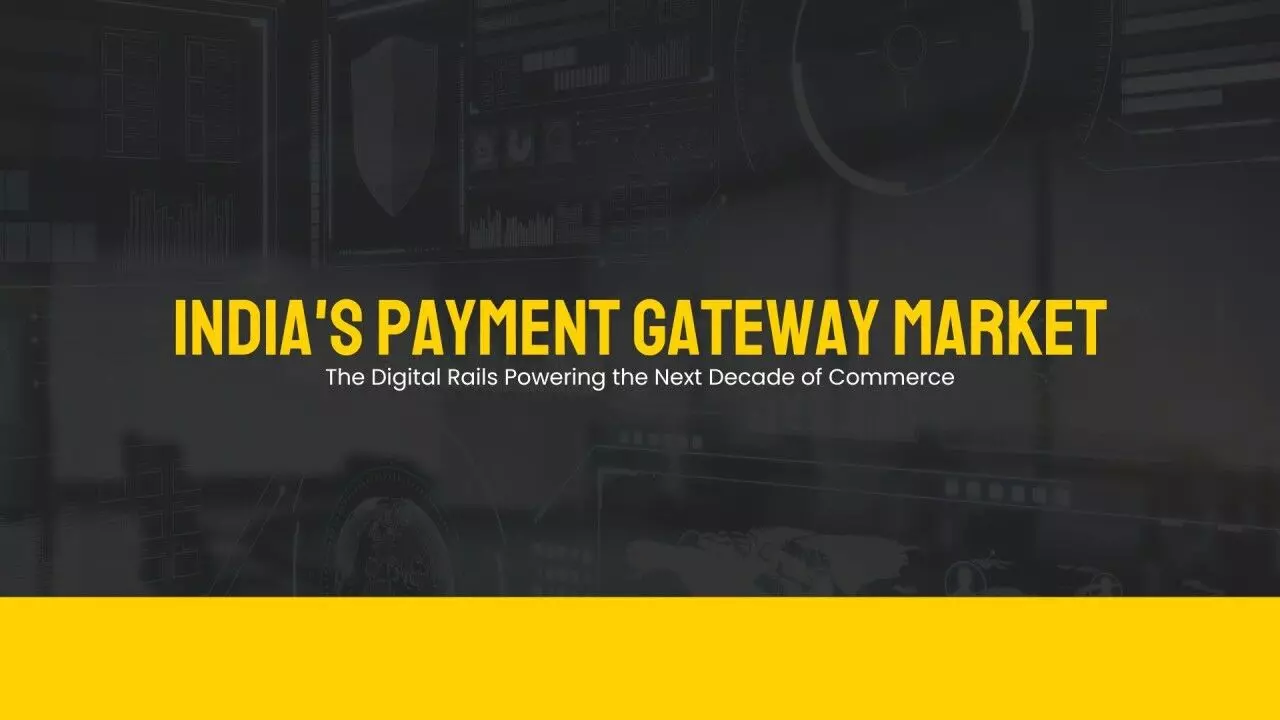Exploring Payment Gateways in India: The Fintech Engines Powering the Nation's Digital Commerce
image for illustrative purpose

India’s digital economy is booming. From UPI-enabled chai stalls to billion-dollar e-commerce ventures, the country's adoption of digital payments has been nothing short of revolutionary. Behind the curtain of this transformation lies a critical technology that makes it all work: payment gateways.
As Indian consumers become increasingly cashless and businesses go digital-first, choosing the right gateway can directly influence growth, customer experience, and financial security. In this deep dive, we’ll explore the evolution of payment gateways in India, the features that matter, and why businesses of all sizes should pay close attention to how they collect digital payments.
What Is a Payment Gateway?
A payment gateway is a fintech tool that securely transmits a customer’s payment details from the point of purchase (like a website or app) to the payment processor or bank. It acts as the digital equivalent of a physical POS machine — ensuring payments are encrypted, verified, and settled safely.
Functions of a payment gateway include:
Authorizing payments in real time
Encrypting transaction data
Supporting multiple payment methods
Transferring funds to the merchant’s account
Protecting against fraud and chargebacks
India’s Payment Landscape: A Snapshot
India is currently the world leader in real-time digital payments, according to ACI Worldwide and the World Bank. The fintech ecosystem here is supported by:
UPI (Unified Payments Interface) — with over 10 billion transactions/month
Widespread use of QR codes and mobile wallets
A booming e-commerce market crossing ₹10 lakh crore
Government policies pushing financial inclusion and digitization
While UPI is king for peer-to-peer (P2P) transactions, businesses still need structured and secure platforms to process consumer payments — and that’s where modern payment gateways in India play a pivotal role.
Who Needs a Payment Gateway?
Any business — digital or brick-and-mortar — that wants to accept online payments needs a payment gateway. This includes:
E-commerce websites (from large marketplaces to D2C brands)
Freelancers and consultants billing clients locally and globally
Subscription-based services (SaaS, OTT, online learning)
Mobile apps and games offering in-app purchases
Non-profits and NGOs accepting donations
Local retailers digitizing with QR-based checkout systems
Key Benefits of Payment Gateways
Using a payment gateway brings several strategic advantages:
Feature | Business Benefit |
Multiple payment options | Higher checkout conversion rates |
Fast settlements | Improved cash flow and reinvestment capabilities |
Real-time transaction logs | Better accounting and transparency |
Fraud detection systems | Reduced risk of chargebacks and losses |
API & SDK access | Seamless integration into any platform or app |
Mobile responsiveness | Smooth experience for the majority of Indian consumers |
What to Look for in Payment Gateways in India
Not all gateways are created equal. The best ones are not just processors — they’re business growth partners. Here’s what matters most:
1. Support for Diverse Payment Modes
Ensure your gateway can accept:
UPI
Debit & credit cards (Visa, Mastercard, RuPay)
Net banking
Wallets (PhonePe, Paytm, Amazon Pay, etc.)
EMI & Buy Now, Pay Later options
2. Speed of Settlements
Some gateways take 7 days to settle funds. Others, like Paykassma, offer T+1 settlements or even same-day payouts — crucial for managing working capital.
3. Security & Compliance
Look for PCI-DSS compliance, 3D Secure, OTP validation, and real-time fraud filters. Regulatory alignment with RBI guidelines and KYC/AML policies is non-negotiable.
4. Global Capability
If your business serves or wants to serve international customers, make sure the gateway supports multi-currency payments and international cards.
5. Smart Dashboard & Analytics
Modern gateways like Paykassma provide performance analytics, invoice management, refunds, tax breakdowns, and transaction heatmaps — all in one place.
Spotlight on Paykassma: The New-Age Payment Gateway for Indian Businesses
Among the rising names in India’s payments space, Paykassma stands out for offering flexible, secure, and scalable payment gateway solutions for startups, SMEs, and enterprises.
Highlights of Paykassma:
Supports all major Indian payment methods, including UPI, cards, wallets, and net banking
Fastest settlements in the industry — including instant withdrawal options
Full-stack developer tools: APIs, SDKs, Webhooks, mobile integration kits
International payments support for USD, AED, EUR, GBP, and more
AI-powered fraud detection and transaction verification systems
Transparent pricing and merchant-first policies
Whether you're launching a fashion store, running an EdTech platform, or building a next-gen mobile app, Paykassma delivers the infrastructure you need to collect payments confidently.
Use Case Scenarios
🛒 E-Commerce Brand
A local apparel brand integrates Paykassma into its Shopify website, enabling UPI, card, and BNPL options. The result: a 21% increase in successful checkouts and faster refunds.
📲 Mobile Game Developer
A game studio uses Paykassma’s mobile SDK to collect in-app payments directly from Indian users. Seamless experience = higher user retention.
🧑💻 Freelancer Platform
A gig platform for Indian creatives uses Paykassma’s multi-currency support to bill overseas clients and convert payments to INR without relying on third-party remittance tools.
The Role of Payment Gateways in India’s Startup Ecosystem
India is now the third-largest startup ecosystem in the world. From SaaS unicorns to Bharat-focused fintechs, startups require plug-and-play infrastructure that doesn't delay go-to-market timelines.
A robust payment gateway can:
Accelerate launch by offering quick integration
Support MVPs and scaling stages
Enable data-driven decisions through smart analytics
Minimize churn with better UX in payments
Platforms like Paykassma are particularly relevant for bootstrapped startups that need fast onboarding, clear documentation, and responsive support.
Regulatory Environment
India’s payment systems are monitored by:
RBI (Reserve Bank of India)
NPCI (National Payments Corporation of India)
SEBI, where applicable
Your gateway must adhere to:
Data localization rules
Customer authentication protocols (such as tokenization)
FATF-compliant anti-money laundering policies
Choosing a provider like Paykassma ensures your compliance is built into the platform, reducing legal and reputational risks.
How to Get Started
Want to set up a secure and scalable payment gateway for your business?
Visit https://paykassma.com/business-solutions/payment-gateway-india
Sign up as a merchant and provide KYC documents
Choose your payment methods and currencies
Integrate via API, SDK, or plugin (with onboarding support)
Go live and start accepting payments
Most businesses are able to onboard and go live within 48–72 hours.
Final Thoughts
As India pushes toward a $1 trillion digital economy, the infrastructure powering that growth matters more than ever. The right payment gateways in India not only enable smooth transactions — they empower innovation, boost trust, and create frictionless customer experiences.
For any business — whether you're scaling your D2C store, launching the next unicorn, or simply streamlining online billing — a payment gateway like Paykassma gives you the control, flexibility, and confidence to thrive in India’s high-growth digital landscape.

